Tilo Burghardt
Long-tailed Species Recognition in the NACTI Wildlife Dataset
Oct 24, 2025Abstract:As most ''in the wild'' data collections of the natural world, the North America Camera Trap Images (NACTI) dataset shows severe long-tailed class imbalance, noting that the largest 'Head' class alone covers >50% of the 3.7M images in the corpus. Building on the PyTorch Wildlife model, we present a systematic study of Long-Tail Recognition methodologies for species recognition on the NACTI dataset covering experiments on various LTR loss functions plus LTR-sensitive regularisation. Our best configuration achieves 99.40% Top-1 accuracy on our NACTI test data split, substantially improving over a 95.51% baseline using standard cross-entropy with Adam. This also improves on previously reported top performance in MLWIC2 at 96.8% albeit using partly unpublished (potentially different) partitioning, optimiser, and evaluation protocols. To evaluate domain shifts (e.g. night-time captures, occlusion, motion-blur) towards other datasets we construct a Reduced-Bias Test set from the ENA-Detection dataset where our experimentally optimised long-tail enhanced model achieves leading 52.55% accuracy (up from 51.20% with WCE loss), demonstrating stronger generalisation capabilities under distribution shift. We document the consistent improvements of LTR-enhancing scheduler choices in this NACTI wildlife domain, particularly when in tandem with state-of-the-art LTR losses. We finally discuss qualitative and quantitative shortcomings that LTR methods cannot sufficiently address, including catastrophic breakdown for 'Tail' classes under severe domain shift. For maximum reproducibility we publish all dataset splits, key code, and full network weights.
Towards Application-Specific Evaluation of Vision Models: Case Studies in Ecology and Biology
May 05, 2025Abstract:Computer vision methods have demonstrated considerable potential to streamline ecological and biological workflows, with a growing number of datasets and models becoming available to the research community. However, these resources focus predominantly on evaluation using machine learning metrics, with relatively little emphasis on how their application impacts downstream analysis. We argue that models should be evaluated using application-specific metrics that directly represent model performance in the context of its final use case. To support this argument, we present two disparate case studies: (1) estimating chimpanzee abundance and density with camera trap distance sampling when using a video-based behaviour classifier and (2) estimating head rotation in pigeons using a 3D posture estimator. We show that even models with strong machine learning performance (e.g., 87% mAP) can yield data that leads to discrepancies in abundance estimates compared to expert-derived data. Similarly, the highest-performing models for posture estimation do not produce the most accurate inferences of gaze direction in pigeons. Motivated by these findings, we call for researchers to integrate application-specific metrics in ecological/biological datasets, allowing for models to be benchmarked in the context of their downstream application and to facilitate better integration of models into application workflows.
WildLive: Near Real-time Visual Wildlife Tracking onboard UAVs
Apr 15, 2025Abstract:Live tracking of wildlife via high-resolution video processing directly onboard drones is widely unexplored and most existing solutions rely on streaming video to ground stations to support navigation. Yet, both autonomous animal-reactive flight control beyond visual line of sight and/or mission-specific individual and behaviour recognition tasks rely to some degree on this capability. In response, we introduce WildLive -- a near real-time animal detection and tracking framework for high-resolution imagery running directly onboard uncrewed aerial vehicles (UAVs). The system performs multi-animal detection and tracking at 17fps+ for HD and 7fps+ on 4K video streams suitable for operation during higher altitude flights to minimise animal disturbance. Our system is optimised for Jetson Orin AGX onboard hardware. It integrates the efficiency of sparse optical flow tracking and mission-specific sampling with device-optimised and proven YOLO-driven object detection and segmentation techniques. Essentially, computational resource is focused onto spatio-temporal regions of high uncertainty to significantly improve UAV processing speeds without domain-specific loss of accuracy. Alongside, we introduce our WildLive dataset, which comprises 200k+ annotated animal instances across 19k+ frames from 4K UAV videos collected at the Ol Pejeta Conservancy in Kenya. All frames contain ground truth bounding boxes, segmentation masks, as well as individual tracklets and tracking point trajectories. We compare our system against current object tracking approaches including OC-SORT, ByteTrack, and SORT. Our materials are available at: https://dat-nguyenvn.github.io/WildLive/
MMLA: Multi-Environment, Multi-Species, Low-Altitude Aerial Footage Dataset
Apr 10, 2025Abstract:Real-time wildlife detection in drone imagery is critical for numerous applications, including animal ecology, conservation, and biodiversity monitoring. Low-altitude drone missions are effective for collecting fine-grained animal movement and behavior data, particularly if missions are automated for increased speed and consistency. However, little work exists on evaluating computer vision models on low-altitude aerial imagery and generalizability across different species and settings. To fill this gap, we present a novel multi-environment, multi-species, low-altitude aerial footage (MMLA) dataset. MMLA consists of drone footage collected across three diverse environments: Ol Pejeta Conservancy and Mpala Research Centre in Kenya, and The Wilds Conservation Center in Ohio, which includes five species: Plains zebras, Grevy's zebras, giraffes, onagers, and African Painted Dogs. We comprehensively evaluate three YOLO models (YOLOv5m, YOLOv8m, and YOLOv11m) for detecting animals. Results demonstrate significant performance disparities across locations and species-specific detection variations. Our work highlights the importance of evaluating detection algorithms across different environments for robust wildlife monitoring applications using drones.
Agglomerating Large Vision Encoders via Distillation for VFSS Segmentation
Apr 03, 2025Abstract:The deployment of foundation models for medical imaging has demonstrated considerable success. However, their training overheads associated with downstream tasks remain substantial due to the size of the image encoders employed, and the inference complexity is also significantly high. Although lightweight variants have been obtained for these foundation models, their performance is constrained by their limited model capacity and suboptimal training strategies. In order to achieve an improved tradeoff between complexity and performance, we propose a new framework to improve the performance of low complexity models via knowledge distillation from multiple large medical foundation models (e.g., MedSAM, RAD-DINO, MedCLIP), each specializing in different vision tasks, with the goal to effectively bridge the performance gap for medical image segmentation tasks. The agglomerated model demonstrates superior generalization across 12 segmentation tasks, whereas specialized models require explicit training for each task. Our approach achieved an average performance gain of 2\% in Dice coefficient compared to simple distillation.
The PanAf-FGBG Dataset: Understanding the Impact of Backgrounds in Wildlife Behaviour Recognition
Feb 28, 2025Abstract:Computer vision analysis of camera trap video footage is essential for wildlife conservation, as captured behaviours offer some of the earliest indicators of changes in population health. Recently, several high-impact animal behaviour datasets and methods have been introduced to encourage their use; however, the role of behaviour-correlated background information and its significant effect on out-of-distribution generalisation remain unexplored. In response, we present the PanAf-FGBG dataset, featuring 20 hours of wild chimpanzee behaviours, recorded at over 350 individual camera locations. Uniquely, it pairs every video with a chimpanzee (referred to as a foreground video) with a corresponding background video (with no chimpanzee) from the same camera location. We present two views of the dataset: one with overlapping camera locations and one with disjoint locations. This setup enables, for the first time, direct evaluation of in-distribution and out-of-distribution conditions, and for the impact of backgrounds on behaviour recognition models to be quantified. All clips come with rich behavioural annotations and metadata including unique camera IDs and detailed textual scene descriptions. Additionally, we establish several baselines and present a highly effective latent-space normalisation technique that boosts out-of-distribution performance by +5.42% mAP for convolutional and +3.75% mAP for transformer-based models. Finally, we provide an in-depth analysis on the role of backgrounds in out-of-distribution behaviour recognition, including the so far unexplored impact of background durations (i.e., the count of background frames within foreground videos).
Tuning Vision Foundation Model via Test-Time Prompt-Guided Training for VFSS Segmentations
Jan 30, 2025



Abstract:Vision foundation models have demonstrated exceptional generalization capabilities in segmentation tasks for both generic and specialized images. However, a performance gap persists between foundation models and task-specific, specialized models. Fine-tuning foundation models on downstream datasets is often necessary to bridge this gap. Unfortunately, obtaining fully annotated ground truth for downstream datasets is both challenging and costly. To address this limitation, we propose a novel test-time training paradigm that enhances the performance of foundation models on downstream datasets without requiring full annotations. Specifically, our method employs simple point prompts to guide a test-time semi-self-supervised training task. The model learns by resolving the ambiguity of the point prompt through various augmentations. This approach directly tackles challenges in the medical imaging field, where acquiring annotations is both time-intensive and expensive. We conducted extensive experiments on our new Videofluoroscopy dataset (VFSS-5k) for the instance segmentation task, achieving an average Dice coefficient of 0.868 across 12 anatomies with a single model.
MultiCamCows2024 -- A Multi-view Image Dataset for AI-driven Holstein-Friesian Cattle Re-Identification on a Working Farm
Oct 16, 2024
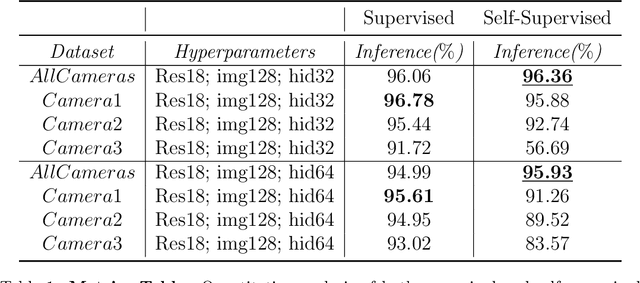
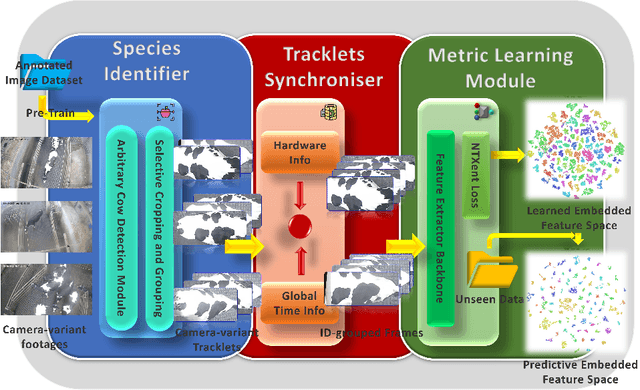
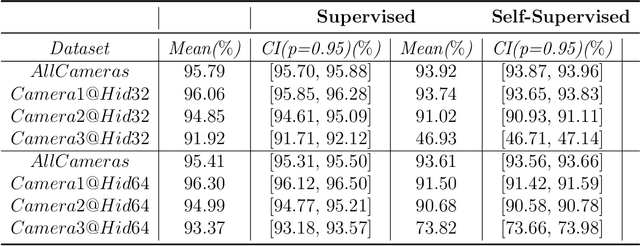
Abstract:We present MultiCamCows2024, a farm-scale image dataset filmed across multiple cameras for the biometric identification of individual Holstein-Friesian cattle exploiting their unique black and white coat-patterns. Captured by three ceiling-mounted visual sensors covering adjacent barn areas over seven days on a working dairy farm, the dataset comprises 101, 329 images of 90 cows, plus the underlying original CCTV footage. The dataset is provided alongside full computer vision recognition baselines, that is both a supervised and self-supervised learning framework for individual cow identification trained on cattle tracklets. We report a performance above 96% single image identification accuracy from the dataset and demonstrate that combining data from multiple cameras during learning enhances self-supervised identification. We show that our framework enables fully automatic cattle identification, barring only the simple human verification of tracklet integrity during data collection. Crucially, our study highlights that multi-camera, supervised and self-supervised components in tandem not only deliver highly accurate individual cow identification but also achieve this efficiently with no labelling of cattle identities by humans at all. We argue that this improvement in efficacy has practical implications for livestock management, behaviour analysis, and agricultural monitoring. For full reproducibility and practical ease of use, we publish all key software and code including re-identification components and the species detector with this paper.
ChimpVLM: Ethogram-Enhanced Chimpanzee Behaviour Recognition
Apr 13, 2024Abstract:We show that chimpanzee behaviour understanding from camera traps can be enhanced by providing visual architectures with access to an embedding of text descriptions that detail species behaviours. In particular, we present a vision-language model which employs multi-modal decoding of visual features extracted directly from camera trap videos to process query tokens representing behaviours and output class predictions. Query tokens are initialised using a standardised ethogram of chimpanzee behaviour, rather than using random or name-based initialisations. In addition, the effect of initialising query tokens using a masked language model fine-tuned on a text corpus of known behavioural patterns is explored. We evaluate our system on the PanAf500 and PanAf20K datasets and demonstrate the performance benefits of our multi-modal decoding approach and query initialisation strategy on multi-class and multi-label recognition tasks, respectively. Results and ablations corroborate performance improvements. We achieve state-of-the-art performance over vision and vision-language models in top-1 accuracy (+6.34%) on PanAf500 and overall (+1.1%) and tail-class (+2.26%) mean average precision on PanAf20K. We share complete source code and network weights for full reproducibility of results and easy utilisation.
Universal Bovine Identification via Depth Data and Deep Metric Learning
Mar 29, 2024
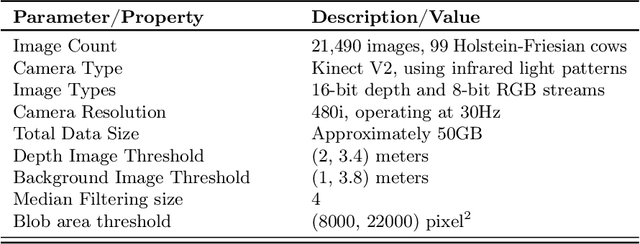
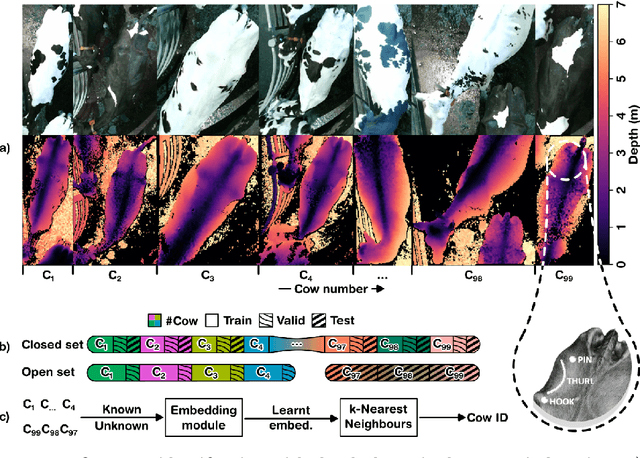
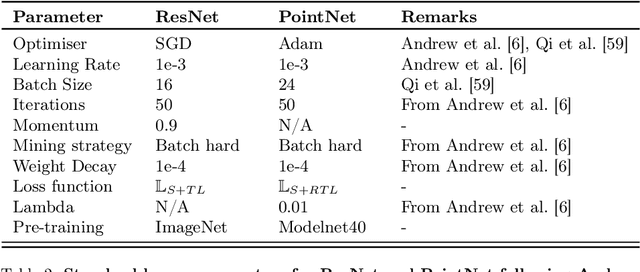
Abstract:This paper proposes and evaluates, for the first time, a top-down (dorsal view), depth-only deep learning system for accurately identifying individual cattle and provides associated code, datasets, and training weights for immediate reproducibility. An increase in herd size skews the cow-to-human ratio at the farm and makes the manual monitoring of individuals more challenging. Therefore, real-time cattle identification is essential for the farms and a crucial step towards precision livestock farming. Underpinned by our previous work, this paper introduces a deep-metric learning method for cattle identification using depth data from an off-the-shelf 3D camera. The method relies on CNN and MLP backbones that learn well-generalised embedding spaces from the body shape to differentiate individuals -- requiring neither species-specific coat patterns nor close-up muzzle prints for operation. The network embeddings are clustered using a simple algorithm such as $k$-NN for highly accurate identification, thus eliminating the need to retrain the network for enrolling new individuals. We evaluate two backbone architectures, ResNet, as previously used to identify Holstein Friesians using RGB images, and PointNet, which is specialised to operate on 3D point clouds. We also present CowDepth2023, a new dataset containing 21,490 synchronised colour-depth image pairs of 99 cows, to evaluate the backbones. Both ResNet and PointNet architectures, which consume depth maps and point clouds, respectively, led to high accuracy that is on par with the coat pattern-based backbone.
 Add to Chrome
Add to Chrome Add to Firefox
Add to Firefox Add to Edge
Add to Edge